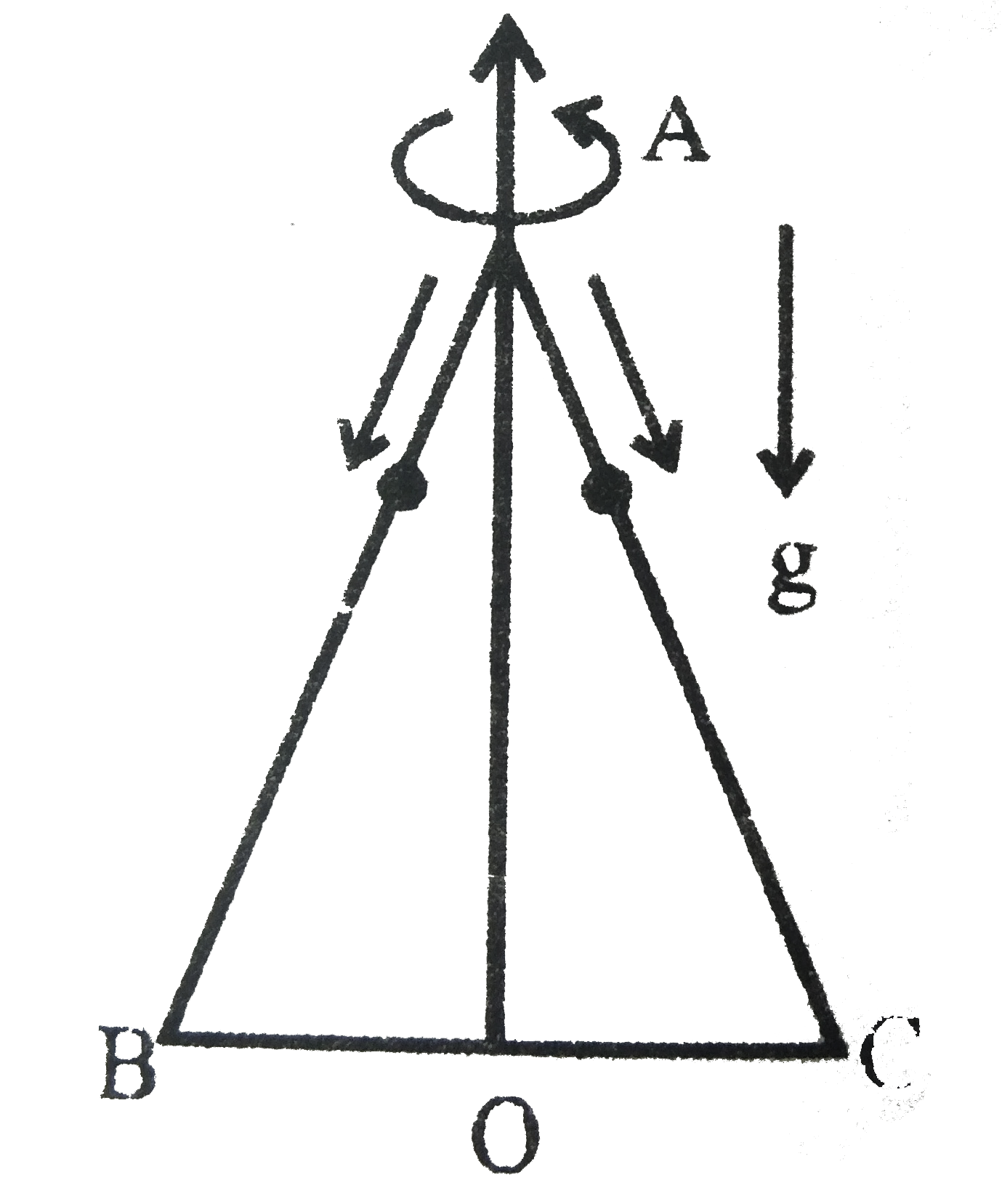Two beads are released from A simultaneoulsy to slide along smooth AB and AC. Find the ratio of time taken by them to reach B and C respectively

The correct Answer is:C
Step by step video, text & image solution for Two beads are released from A simultaneoulsy to slide along smooth AB and AC. Find the ratio of time taken by them to reach B and C respectively by Physics experts to help you in doubts & scoring excellent marks in Class 11 exams.
Updated on:21/07/2023Similar Questions
Knowledge Check
Two objects are dropped together from the height h1 and h2 . The ratio of time taken by them to reach the earth is
A√h1h2Bh1h2C√h2h1Dh2h1A equilaterial triangle ABC formed from a uniform wire has two small identical beads initially located at A. The triangle is set rotating about the vertical axis AO. Then the beads are released from rest simultaneously and allowed to slide down. one long. AB and the other along AC as shown. Neglecting frictional effects, the quantities that are conserved as the beads slide down, are.
 .AAngular velocity and total energy (kinetic and potential)BTotal angular momentum and totak energyCAngular velocity and moment of inertia about the axis rotationDTotal angular momentum and moment of inertia about the axis rotation.
.AAngular velocity and total energy (kinetic and potential)BTotal angular momentum and totak energyCAngular velocity and moment of inertia about the axis rotationDTotal angular momentum and moment of inertia about the axis rotation.An equailaral triangle ABC formed from a uniform wire has two small identical beads initially located at A. The triangle is set rotating about the vertical axis AO. Then the beads are released from rest simultaneously and allowed to slide down, one along AB and the other along AC as shown. Neglectig frictional effects, the equatities that are conserved as the beads slids down, are
 Aangular velocity and total energy (kinetic and potential)BTotal angular momentum and total energyCangular velocity and moment of inertia about the axis of rotaitonDtotal angular momentum and momento f inertia about the axis of rotation
Aangular velocity and total energy (kinetic and potential)BTotal angular momentum and total energyCangular velocity and moment of inertia about the axis of rotaitonDtotal angular momentum and momento f inertia about the axis of rotation
Two iron and wooden balls identical in size are released from the same heilght in vacuum. The time taken by them to reach the ground are:
View SolutionFind the time taken by 60 Hz a.c. to reach its peak value from zero.
View SolutionTwo balls are dropped from heights h and 2h respectively. The ratio of time taken by these balls to reach the earth is
View SolutionA ball is released from point A. During its motiom ball takes two seconds from B to C, Find the time taken by ball from A to C.

View SolutionTwo balls A & B, mass of A is m and that of B is 5 m are dropped from the towers of height 36 m and 64 m respectively. The ratio of the time taken by them to reach the ground is :
View Solution

